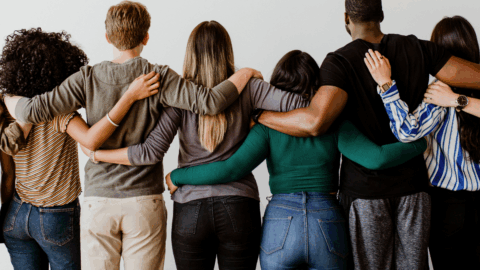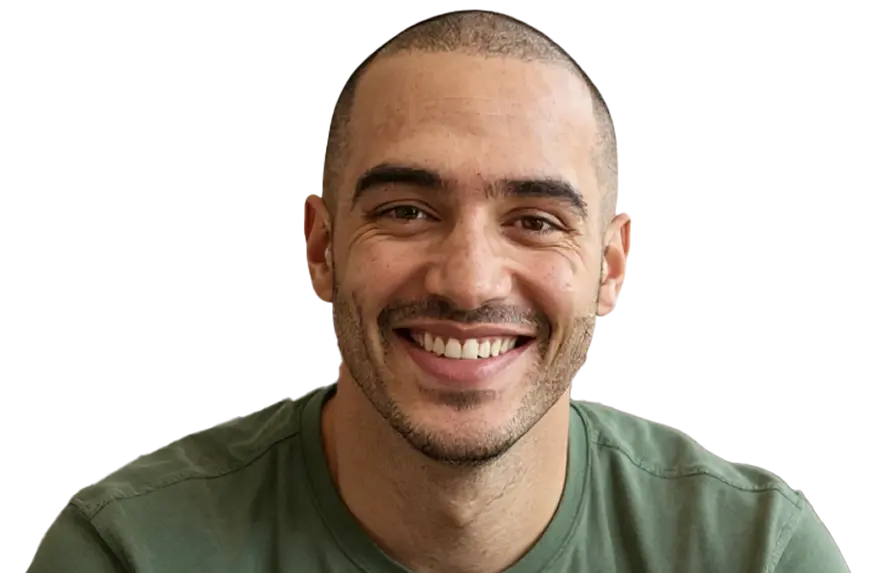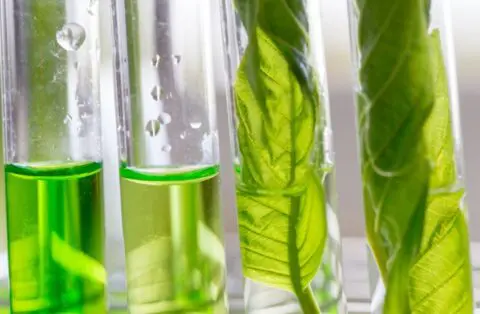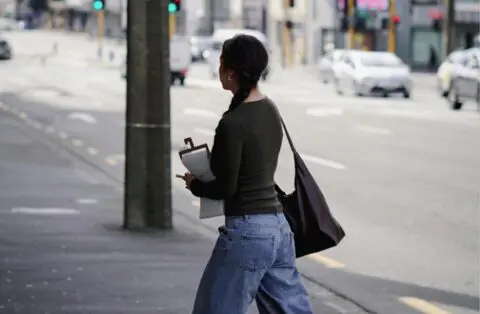What you’ll learn
This article explores International Overdose Awareness Day and its vital role in ending the overdose crisis while addressing the grief of those affected. You’ll discover how this global campaign honors those we’ve lost while building hope for the future. You’ll also learn practical overdose prevention strategies, including naloxone use and harm reduction approaches.
On August 31st each year, communities worldwide come together for International Overdose Awareness Day, a time to remember the grief felt by many, reflect, and take meaningful action. It’s the world’s largest annual campaign to end overdose, but at its heart, it’s about something deeply human: honoring the lives of people we’ve loved and lost, and working together to protect those who are still with us.
Recent data brings some hope. Despite an estimated 80,000 drug overdose deaths in 2024, this estimation represents a 27% decrease from 2023. It shows us that positive change is possible when communities work together. But behind every number is someone’s child, parent, sibling, or friend, and every single loss matters.
At QuickMD, we’ve witnessed firsthand how access to compassionate, evidence-based treatment can change lives. Our providers work daily with patients and families affected by substance use, offering Medication-Assisted Treatment (MAT) and support that meets people where they are in their recovery journey. We’ve seen how reducing barriers to care, whether through telemedicine access or removing stigma around substance use disorder, creates real opportunities for healing.
International Overdose Awareness Day does several important things. It gives people a chance to openly mourn loved ones and tells people who are dependent on drugs, and those in recovery, that they matter. The day also shares vital information about support services and overdose prevention.
But most importantly, it spreads a message of hope. It raises awareness about overdose deaths being preventable and that recovery is possible.
Whether you’re someone in recovery, a family member, a healthcare provider, or simply someone who cares about your community, International Overdose Awareness Day reminds us that together, we can make a difference.
Understanding the current overdose crisis
To prevent future overdose deaths, we need to understand what we’re facing right now. The overdose crisis has evolved dramatically over the past two decades, becoming more complex and dangerous in ways that touch every community across America.
How opioid overdose risks have changed in recent years
The overdose crisis looks different from what it was even a few years ago.
Synthetic opioids like fentanyl are now involved in about 60% of all overdose deaths, and what makes this particularly heartbreaking is how unpredictable it’s become. Fentanyl is roughly 50 times stronger than heroin and even stronger than oxycodone, which means even people using what they think are familiar substances can face unexpected danger.
The illicit drug supply has become increasingly unpredictable and deadly.
The street drug supply has become less predictable, with fentanyl appearing in drugs people don’t expect it in. This isn’t about making choices people regret, but about a supply that’s become dangerous in ways that even experienced users can’t anticipate.
Recognizing opioid overdose warning signs and when someone needs help
Knowing the signs of opioid overdose means you might save someone’s life.
If you see any of these signs, call 911 and administer naloxone if available:
- Slow, shallow, or absent breathing
- Blue lips or fingernails
- Gurgling sounds or choking
- Can’t wake them up or get a response
- Body feels limp, skin looks pale or clammy
Why getting help for opioid addiction and substance use can feel so hard
Many people want help, but face real obstacles that make it feel impossible. It’s not about a lack of willpower when dealing with substance use disorder. There are genuine barriers that communities are working to address.
What makes seeking help challenging:
- Fear of being judged by family, friends, or healthcare providers
- Worry about job security or legal consequences
- Treatment programs with long waiting lists
- Insurance that doesn’t cover what’s needed
- Living far from treatment services or lacking transportation
- Past experiences where they felt unwelcome or misunderstood
Many people have tried getting help before and experienced discrimination, making them hesitant to try again.
International Overdose Awareness Day is a day to remind those nervous or unsure about treatment that it is possible, and more organizations are making care more accessible, compassionate, and understanding.
Overdose prevention strategies that save lives
The most important message of International Overdose Awareness Day is one of hope. Overdose deaths are preventable, and together we can support those around us and help them overcome their struggles.
Communities around the world have developed practical, compassionate strategies that are saving lives right now, and many of these approaches can be learned and shared by anyone who cares about keeping people safe.
Naloxone: the lifesaving medication that reverses opioid overdoses
Naloxone (brand name Narcan®) is our most immediate lifeline to stopping opioid overdoses.
This medication can temporarily reverse an opioid overdose when given in time, and it’s now available over-the-counter at most pharmacies.
Many communities also offer free naloxone training and distribution programs.
What makes naloxone so valuable is how safe and straightforward it is to use. Even if someone hasn’t actually overdosed on opioids, naloxone won’t cause harm. It works by blocking opioids’ effects on the brain, alleviating symptoms, and restoring normal breathing patterns.
How to use naloxone:
- Check if the person responds by shouting their name and rubbing their chest firmly
- Call 911 immediately, even before giving naloxone
- Spray naloxone into one nostril while tilting their head back slightly
- If they don’t respond after 2-3 minutes, give a second dose
- Stay with them until emergency help arrives
Harm reduction approaches for overdose prevention
Harm reduction approaches focus on keeping people alive and reducing risks, whether someone is ready for complete abstinence or taking smaller steps toward recovery. These strategies recognize that every positive change matters, no matter how small it might seem.
Effective harm reduction includes:
- Syringe services programs that provide clean needles and safe disposal
- Drug checking services to test for substances like fentanyl
- Overdose prevention education for people who use drugs and their families
- Safe places where people can access healthcare without fear of judgment
Building community support systems for overdose prevention
Recovery happens in community, not in isolation.
The most effective prevention strategies recognize that people need more than just medical treatment.
They need stable housing, meaningful connections, mental health support, and opportunities to contribute to something larger than themselves.
What supportive communities provide:
- Healthcare providers who listen without judgment
- Peer support from others who understand the journey
- Help with practical needs like housing and employment
- Mental health care that addresses underlying issues
- Family education and support services
One of our goals at QuickMD is to remove the barriers that have traditionally made getting help difficult. Through our telemedicine platform, people can access evidence-based treatment without waiting rooms, travel time, or taking time off work.
We meet people where they are, wherever that may be.
Changing how we talk about addiction and overdose
One of the most powerful prevention tools we have is changing the conversation around substance use.
When we talk about addiction as a medical condition rather than a moral failing, we create room for people to be honest about their struggles and seek help before a crisis occurs.
This means families learning to respond with love instead of punishment, communities investing in treatment rather than just enforcement, and healthcare systems that welcome people with addiction rather than turning them away.
International Overdose Awareness Day reminds us that it’s about creating the conditions where healthy choices become possible and support is available when people are ready to accept it.
How to take action on International Overdose Awareness Day
International Overdose Awareness Day is also about recognizing that every person has a role to play in preventing future overdose deaths.
The actions we take in our families, workplaces, and communities today can create the kind of environment where people feel safe seeking help and where recovery becomes possible.
Reducing overdose stigma in our daily lives
Words mean something, and the way we talk about addiction matters more than we might realize.
Simple changes in how we discuss substance use can help people feel less ashamed and more willing to reach out for support when they need it.
Language about addiction that helps:
- “Person with substance use disorder” instead of “addict” or “junkie”
- “Person in recovery” rather than “former addict”
- “Substance use disorder” rather than “drug abuse”
Also, don’t underestimate the power of simple recognition.
People struggling with addiction often describe feeling invisible or avoided by others. Something as basic as making eye contact and saying hello can remind someone that they’re still seen as a person worth acknowledging.
One person in recovery described how a simple greeting from a stranger on the street meant the world after feeling ignored and forgotten. These are simple, small acts of humanity. They cost nothing but can restore dignity in powerful ways.
Beyond words, our actions create safety. When someone trusts us enough to share their struggles, responding with curiosity rather than judgment opens doors for honest conversation.
As Maryland Gov. Wes Moore reminds us,
The first step for saving lives is meeting people where they are with compassion, respect, and love above all else.
Asking “How can I support you?” instead of “Why don’t you just quit?” acknowledges the complexity of addiction and offers genuine help.
Want more tips on reducing stigma and helping those you love with addiction? Check out our Learning Center for more insights.
Learning and sharing overdose prevention knowledge
Getting trained in naloxone use is one of the most direct ways to save lives. Many pharmacies, community health centers, and local organizations offer free training sessions that teach you how to recognize an overdose and respond effectively.
There’s other valuable knowledge worth sharing, too:
- Learning how to find local treatment resources and support groups means you can point someone in the right direction when they’re ready.
- Understanding that addiction is a medical condition, not a character flaw, helps you respond with compassion instead of judgment.
- Recognizing that recovery from opioids looks different for everyone and can take time.
- Knowing that relapse doesn’t mean failure, it’s often part of the recovery process, helps you support someone through setbacks without losing hope.
Supporting those affected by overdose and addiction
Sometimes the most powerful thing we can do is simply be present for someone who’s struggling.
This doesn’t mean becoming their therapist or trying to fix everything, but just showing up consistently and letting them know they matter.
Practical ways to show support:
- Check in regularly without making it about their substance use
- Include them in social activities that don’t revolve around alcohol or drugs
- Learn about local resources so you can share information when they’re ready
- Celebrate small victories and positive changes, no matter how minor they seem
- Remember important dates like anniversaries of sobriety or treatment milestones
Getting opioid addiction treatment and overdose prevention support with QuickMD (when you’re ready)
If International Overdose Awareness Day has you thinking about treatment options related to drug overdose, whether for yourself or someone you care about, know that compassionate, evidence-based care is available when you’re ready to take that step.
At QuickMD, we understand that reaching out for help with substance use takes tremendous courage.
That’s why we’ve designed our services to remove as many barriers as possible. Through our telemedicine platform, you can speak with a licensed provider from the comfort and privacy of your own home, without waiting rooms or lengthy appointment delays.
Our approach to opioid addiction treatment centers on meeting you exactly where you are.
We offer Medication-Assisted Treatment using FDA-approved medications like Suboxone®, combined with counseling and ongoing support. Whether you’re just starting to consider opioid treatment or you’ve tried other approaches before, our providers are here to have honest, non-judgmental conversations about what might work best for your situation.
We’ve seen how access to quality care changes lives. When opioid treatment feels approachable rather than intimidating, when providers listen without judgment, and when care fits into your real life rather than requiring you to rearrange everything around it, recovery becomes more possible.
Getting started is straightforward: same-day appointments are available seven days a week, with transparent pricing at $99 per visit. No insurance hassles, no long intake processes. Just direct access to the medical support you need.
If you’re not sure where to begin, that’s completely normal. Many of our patients start with questions rather than certainty. Our providers are here to help you understand your options, discuss what opioid treatment might look like, and support you in making decisions that feel right for your life.
The conversation you have today could be the beginning of a completely different tomorrow. Recovery is possible, support is available, and you deserve care that treats you with dignity and respect.
Frequently asked questions about International Overdose Day
How did International Overdose Awareness Day get started?
International Overdose Awareness Day was established in 2001 in Australia as a way to remember and honor those lost to overdose worldwide.
The day was created by people who had experienced loss firsthand and wanted to create room for public mourning while also advocating for better policies and support systems. Today, communities in countries around the world hold candlelight vigils, educational events, and advocacy activities to raise awareness and reduce stigma.
What does the purple color symbolize on International Overdose Awareness Day?
Purple is the official color of International Overdose Awareness Day and represents remembrance for those who have died from overdose.
Communities often encourage people to wear purple on August 31st as a way to show solidarity and honor the memory of those lost. Purple ribbons, clothing, and decorations help make the day visible in communities while creating opportunities for conversations about overdose prevention and support.
Can someone still participate in International Overdose Awareness Day if they haven’t been personally affected by overdose?
Absolutely. International Overdose Awareness Day welcomes everyone who wants to help prevent overdose deaths and support people affected by substance use.
You don’t need personal experience with addiction or loss to make a meaningful contribution. You can participate by learning about overdose prevention, sharing accurate information about addiction as a medical condition, attending local events or candlelight vigils, getting trained in lifesaving naloxone use, or simply listening with compassion when someone shares their story.




